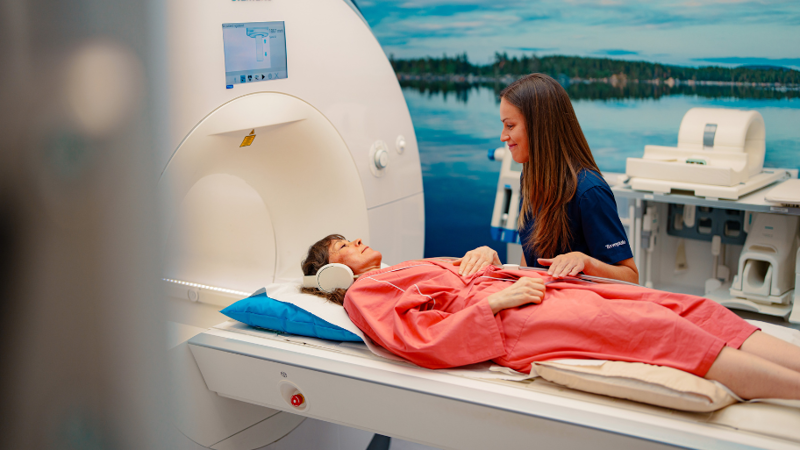The holiday is over but did you leave the cap open?
The bottom of a pint or bottle becomes quite familiar to some during vacation as a part of relaxation. Our expert explains what happens to the mind and body when the cap is tightened or completely closed.

Although the total consumption of substances in Finland has decreased in the 2020s, their use seems to have become more common among people who already have had higher consumption. Substance abuse problems are relatively common, because according to various studies, up to half of working-age men and a quarter of women drink too much alcohol. As much as 70 percent of alcohol-dependent persons are involved in working life.
However, reducing or quitting alcohol consumption has many health benefits. The first positive signs of quitting drinking are felt in the morning.
– One of the most significant effects is the improvement of sleep quality and restorative effect. Even two restaurant servings reduce the amount of restorative sleep and postpone the start of the body's recovery, says Terveystalo's senior occupational health development doctor Maaret Helintö.
One serving at a restaurant, such as a small bottle of beer, relaxes and may help you fall asleep. As the body's alcohol tolerance increases, relaxation soon requires two doses, then three. Weaving can insidiously become a partially learned habit, but it can also be unlearned.
How much is too much?
The effect of alcohol is individual. A person's weight has a significant effect on the absorption of alcohol. That's why men tolerate alcohol better than women because of their size, and because of this the risk limits for women and men are different. Even one dose of alcohol can affect the quality of your night's sleep and, with it, your level of alertness. If the risk limits are constantly banging, and a night's sleep cannot be restored, you should think about your own alcohol use, keep days without a drink and seek the advice of an expert.
Limits of moderate risk of alcohol for average-sized, healthy working-age men and women.
One portion = about one 12 cl wine glass or 0.33 medium beer bottle.
| dose per day |
dose per week |
|
| man | 2 | 14 |
| woman | 1 | 7 |
Only positive effects
Alcohol paralyzes the central nervous system, which in turn relaxes the muscles of the upper respiratory tract, meaning that a person snores more easily. This can affect, for example, oxygenation during sleep, which affects the recovery of the body and mind, as well as metabolism. With the cessation of weeding, the liver begins to recover and the mood stabilizes. The metabolism also returns to normal and the excess fluid accumulated in the body by alcohol begins to be removed.
– Stopping drinking starts with honestly calculating the number of portions you drink on a weekly basis, for example, and setting yourself a goal to reduce the number of portions during the next week. For others, the once-through method works better, i.e. the cap tightly closed, says Helintö.
Helintö also urges you to think about situations where you grab a bottle or a pint. If social life focuses on the terrace and bars, could you do something else instead of going there?
– It's good to try to motivate yourself and think about the things that would be better when you stop knitting, advises Helintö.
If reducing or quitting on your own is not possible, you should seek the help of professionals.
– Sadly, very few people come to the reception with this issue. Our purpose is to help, in no case to judge, states Helintö.
More occupational health articles

Terveystalo's digital services have been awarded the internationally recognized ISO27001 information security certification.
Terveystalo's information security practices, processes, and risk management are in line with international best practices.

Does massage help relieve stress? – Touch restores and calms the body and mind
Stress is not always visible on the outside, but the body does show signs when the strain increases. According to Lassi Ylönen, a trained massage therapist at Terveystalo Rela, the body often communicates stress through subtle signs.

Circular economy and artificial intelligence boost performance and improve care
At the heart of sustainable healthcare, technology serves as a tool for improving both the quality of care and accountability. Terveystalo favors solutions that combine sustainability, cost-effectiveness, and medical expertise.

Psychologist: How to make Christmas a relaxed and personal celebration
For many, the anticipation of Christmas begins when cities are decked out in seasonal lights and the first chocolates, calendars, and gingerbread cookies appear on store shelves. Christmas carols ring out and the Tonttuparaati choir sings “Kiire jo on! Kiire jo on!” (Hurry up! Hurry up!). This warm and atmospheric celebration also brings other feelings to mind: how on earth can we get through all this without losing our joy and peace in the rush?

Terveystalo and Gosta Labs deepen their cooperation: the goal is to streamline work with a superior patient information system
Terveystalo is deepening its cooperation with Finnish health technology company Gosta Labs and investing €1 million in the company as a minority investor. The aim is to jointly develop artificial intelligence solutions that improve the quality of care and the efficiency of reception work as part of Terveystalo's new patient information system, Terveystalo Ella.

First aid preparedness in companies requires action and courage
First aid skills increase resilience, but a barometer survey of Finnish organizations' first aid capabilities published in October reveals that the number of trained personnel is alarmingly low.